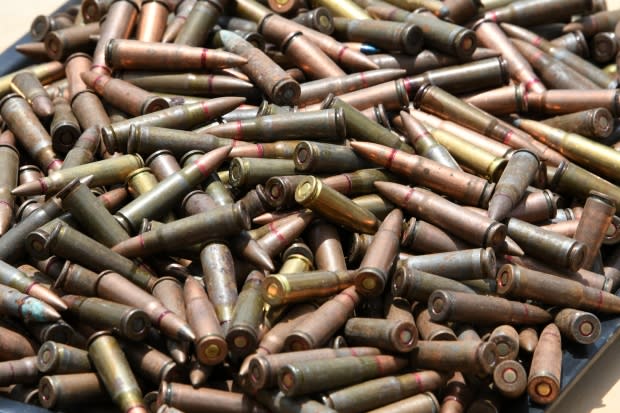New Sask. ammunition incinerator will be safer than one shut down after failing to meet standards: Defence
The Department of National Defence wants to build a new incinerator to burn ammunition at Dundurn, Sask., almost 20 years after the last one was shut down following a report that found soil contamination and "astronomically high" lead levels in an area used by workers.
In March the federal government put out a call for expressions of interest to build the $3-million small arms incinerator at the CFAD (Canadian Forces Ammunition Depot) Dundurn military base, about 35 kilometres south of Saskatoon.
The furnace will be used to burn through the department's store of obsolete or surplus ammunition.
It currently has 22,374,500 small arms ammunition cartridges and 60,000 kilograms of bulk-packed small arms ammunition awaiting disposal.
The department said the new furnace, which would be the only one of its kind in Canada, will have a pollution abatement system and emissions monitoring to make it safer than the previous facility.
Lead levels at old facility 'astronomically high'
The old furnace was shut down around 2000, after it failed to meet new federal and provincial environmental standards.
An internal report released in 2001, when the facility had already been decommissioned, found that lead concentrations in the work area of the old facility were "astronomically high" and cause for "serious concern."
It said seven of the samples taken inside the buildings of the burn facility, which were "routinely used by personnel," were 100 times higher than the level at which contamination was considered to be hazardous.

"Very high levels" of other heavy metals including barium, cadmium and chromium were also found in the samples, but there were no guidelines for acceptable levels at the time. The report was conducted by the Defence Research Establishment Valcartier military research station.
Workers would have worn safety equipment: DND
The Department of Defence said people working in the facility would have been required to wear safety equipment to protect them from the contaminants.
It said all personnel who worked in the furnace area had to get blood tests twice a year to monitor lead levels. Each of them would have also been tested before they started working there to assess the "baseline" level of lead content in their blood, said the department.
"Given the time that has since passed, we don't have historical data from that era, nor do we have records of health concerns ever being identified as a result of those blood tests," the Department of National Defence said in a written response to questions.
The 2001 report also found some "severe" soil contamination in localized parts of the base, including heavy contamination from sandblast residue.
Contamination didn't reach residential area: report
But samples taken from residential areas on and off the base were "comfortably" within the normal range for soils.
The report said contaminants appeared to be contained because there was nothing to suggest they had entered the water table at the time.
But it did raise concerns about animals such as deer consuming contaminated foliage.
"The presence of these metals in or on foliage indicates that local animals may have considerable concentrations of lead and other metals in their systems, with all of the physical problems this leads to," said the report.
It said that was concerning because deer hunting was allowed at CFAD Dundurn at the time.
The department said a private company was hired to clean and decontaminate the furnace site after it was closed.
No open burning has ever taken place at the site, it said.
New technology makes burning safer
"The Department of National Defence adheres to the strictest provincial and federal environmental regulations and at the time of decommissioning, the technology to ensure this did not exist," said a written response from the department.
"However, technological advances now make it possible for us to explore new incinerator options."
It said a preliminary human health and ecological risk assessment was completed in March 2018.
Some heavy metals such as selenium, aluminum, copper, zinc and lead were found in both soil and groundwater samples but the assessment found there was no unacceptable risk of exposure from the soil.
The department said the project is expected to open up some job opportunities in construction and land preparation.
It said it cannot comment on further opportunities because the project is still in its early stages.

